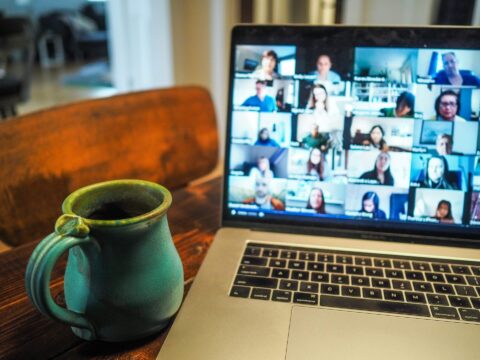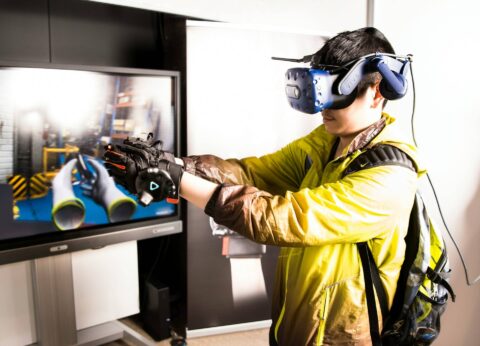We’re swiping, tapping, and scrolling more than we’re sleeping (although hopefully not at the same time). In the grand scheme of human history, the digital age is still in its infancy, yet its impact on our well-being has been seismic.
From the proliferation of smartphones and social media to the rise of remote work and digital entertainment, our daily lives are inextricably intertwined with screens. But as the blue light flickers, how do we ensure that our digital immersion doesn’t erode the shores of our mental and physical health?
In this comprehensive guide, we’ll explore the modern minefield of screen time, its effects on our wellness, and most crucially, how to strike a balance that allows us to thrive in the digital age without neglecting self-care.
The Digital Deluge: Why Screen Time Matters
It’s become almost intuitive to reach for our phones or switch on a device whenever there’s a moment to spare.
The average adult in the United States spends about 6 hours and 42 minutes online every day. For teenagers, this number skyrockets to almost 9 hours. This unprecedented level of connectivity has serious implications for our well-being.
The Impact on Mental Health
Mental health professionals raise concerns about increased rates of anxiety, depression, and even suicide among those who spend more time on digital platforms. Cyberbullying, FOMO (fear of missing out), and the incessant news cycle can all take a toll on our mental state.
Physical Health Ramifications
The effects of excessive screen time on the body are equally alarming. From poor sleep quality caused by blue light exposure to sedentary lifestyles and the associated health risks, the physical impacts of our digital habits are cause for concern.
Social Well-Being in the Virtual Sphere
Our social lives have migrated online, with digital interactions often substituting for in-person connections. But while technology keeps us in touch, it can’t quite replicate the nuanced exchange that occurs face-to-face, leaving our social needs only partially fulfilled and sometimes leading to increased feelings of isolation.
Self-Care in the Shadows of Screens
With screens encroaching on our physical and mental spaces, self-care becomes our shield against the unintended consequences of our digital pursuits.
Defining Digital Detox
Recent years have seen the emergence of the digital detox, a period where one refrains from using electronic devices, especially smartphones or computers. We’ll explore the benefits and how-tos of executing a successful detox.
Building Healthy Digital Habits
Instead of shunning the digital world altogether, we can adopt strategies to make our interactions healthier. From setting strict time limits on certain apps to practicing mindfulness when using digital devices, small habits can make a big difference.
Integrating Traditional Self-Care with Technology
Ironically, technology can also facilitate self-care. We’ll look at apps for mindfulness, fitness trackers, and digital journaling as tools to support our well-being in the digital age.
Nurturing Wellness in a World of Wi-Fi
Balancing screen time and self-care isn’t just about log-offs and digital limitations; it’s about creating a harmonious relationship with technology that enhances rather than detracts from our wellness.
The Role of Routine
Establishing regular routines can help in setting boundaries between work, leisure, and screen time. We’ll discuss the science behind habit formation and share tips for crafting a wellness-affirming schedule.
Spaces for Screen-Free Living
Carving out screen-free zones in our homes a tech-free bedroom, a media-free dining area—can be a sanctuary where we reconnect with ourselves and our loved ones.
Connecting with Nature in the Digital Age
Time spent in nature has a restorative effect on our well-being. We’ll examine how to blend the digital world with the natural world, ensuring we don’t lose touch with the earth beneath our feet.
Elevating Our Digital Diet
Much like our physiological diet, our digital diet requires attention to the content we consume. We’ll explore ways to feed our minds with valuable, nourishing digital content that supports our wellness.
Curating Meaningful Screen Time
Choosing apps, social media accounts, and online content that align with our interests and values is a form of selective engagement that can turn the tide in our favor.
Mindful Consumption and Creation
Being mindful of how and why we engage with digital media can help us stay centered and avoid overindulging. In addition, creating our digital content can be a fulfilling and affirmative act of self-expression.
The Path Forward: Encouraging Digital Wellness in Community and Family
Lastly, we’ll discuss the collective aspect of digital wellness. Just as our screen time affects us, so too does the digital culture created within our families, workplaces, and communities.
Fostering Digital Wellness in Children and Teens
In an era where screens are ubiquitous, it’s crucial to instill healthy digital habits in the young. We’ll share strategies for encouraging well-rounded, tech-savvy youth who understand the importance of balance.
The Workplace Wires
The influence of digital culture in the workplace is undeniable. We’ll explore how companies and employees can collaborate to promote a healthy work-life tech balance that benefits all parties involved.
The Role of Policy and Society
From educational systems to government policies, the structure of society can have an impact on our digital habits. We’ll look at how collective action and advocacy can pave the way for a culture that values both technological progress and human well-being.
In summary, our digital devices are not the enemies of well-being, as long as we wield them mindfully. By understanding the effects of screen time on our mental and physical health and actively pursuing strategies for self-care, we can lead fulfilling lives in the digital age.
It’s not about retreating from the world at our fingertips; it’s about engaging with it in a way that enhances, rather than hinders, our pursuit of wellness.










